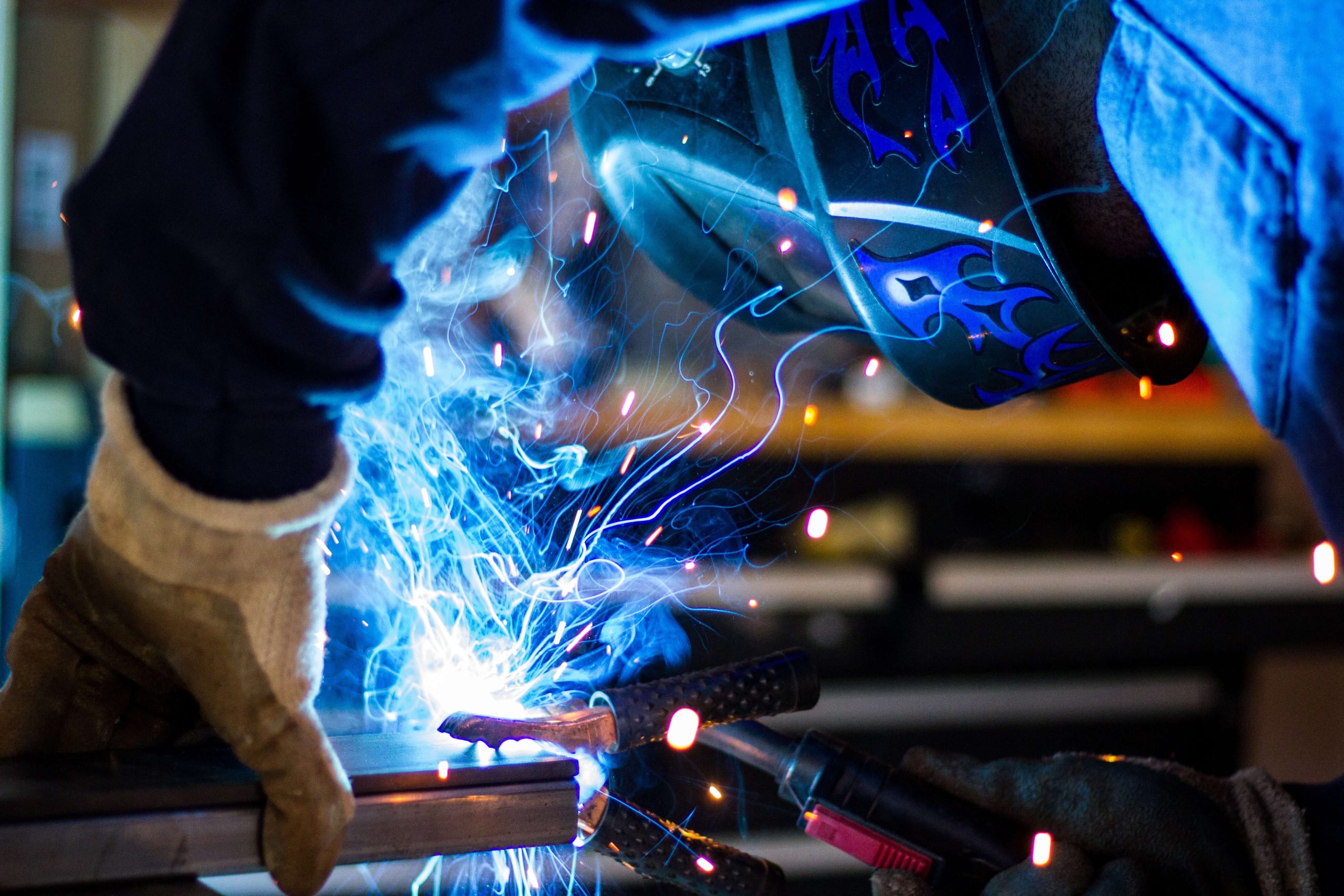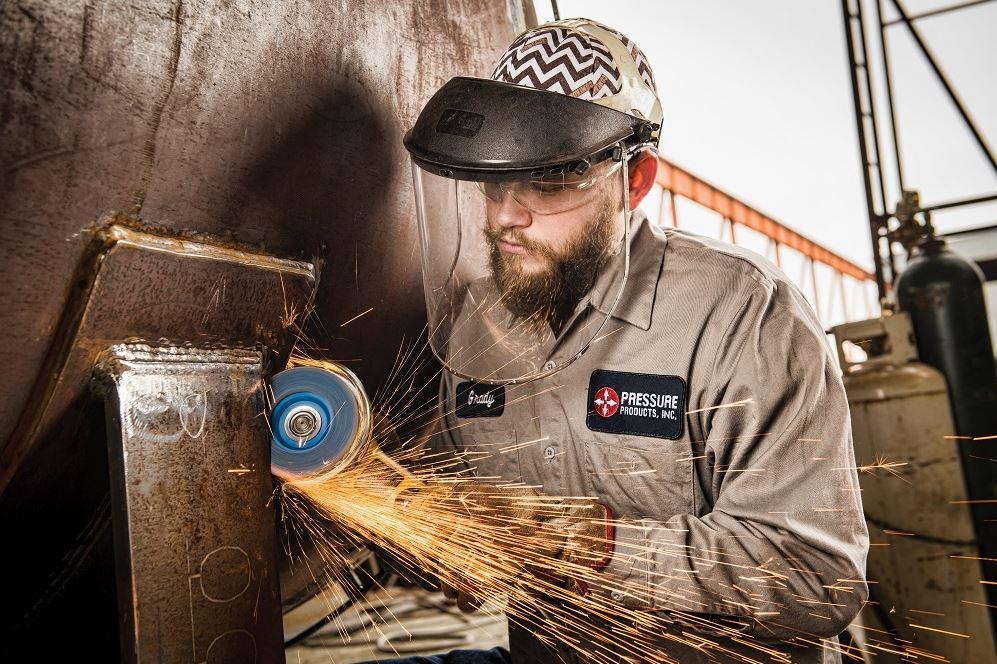How misalignment forms and how Belgrade Fabrication corrects it
Wiki Article
Usual Welding Repair Service Issues and Just How to Address Them Properly
Welding repairs commonly come across a range of concerns that can threaten the honesty of the last item. Common problems consist of insufficient infiltration, porosity, and misalignment, to name a few. Each flaw presents unique challenges that need particular approaches for resolution. Understanding these concerns is essential for welders aiming to enhance their end results and skills. This conversation will certainly check out these common welding repair work problems and reliable techniques to address them.Poor Infiltration
Poor infiltration happens when the weld steel stops working to completely fuse with the base product, resulting in weak joints and possible structural failures. This concern often comes from inadequate warmth input, incorrect electrode angle, or incorrect welding speed. Welders may experience poor infiltration because of a miscalculation of the necessary specifications for a particular product thickness or kind. Additionally, contamination on the base product's surface area can hinder reliable bonding, intensifying the issue. To attend to inadequate penetration, welders should assure ideal setups on their devices and preserve a tidy job surface. Routine examination of welds is recommended to recognize any deficiencies early, permitting prompt improvements and the avoidance of compromised architectural integrity in welded assemblies.Porosity
Porosity is an usual issue in bonded joints that materializes as small gas bubbles trapped within the weld metal. This flaw can endanger the integrity of the weld, resulting in reduced stamina and potential failure under anxiety. Montana Mobile Welding and Repair Belgrade. Porosity typically occurs from contamination, wetness, or improper welding techniques, which enable gases to get away into the molten weld pool. To resolve porosity, welders ought to assure proper surface prep work, maintain a tidy workplace, and utilize ideal welding criteria. Additionally, selecting the right filler material and securing gas can reduce gas entrapment. Routine inspection and testing of welds can assist identify porosity early, assuring timely rehabilitative actions are taken, therefore protecting the top quality and dependability of the welded structureImbalance
Misalignment in welding can develop from numerous elements, consisting of inappropriate configuration and thermal development. Recognizing the source is crucial for effective resolution. Several correction strategies are readily available to straighten components and guarantee architectural stability.Reasons of Misalignment
Welding imbalance usually originates from a range of underlying issues that can compromise architectural stability. One primary cause is improper fit-up of components before welding, which can lead to spaces and irregular surfaces. Variants in thermal growth during the welding procedure can likewise cause distortion, especially if the products being signed up with have various coefficients of growth. Additionally, poor fixturing and clamping might stop working to hold parts securely in position, bring about motion during welding. Badly conserved equipment, consisting of welding makers and tools, may present incongruities in the weld bead, more adding to misalignment. Driver error, stemming from insufficient training or experience, can also play a significant duty in producing misaligned welds.
Correction Techniques Available
Addressing misalignment efficiently needs a mix of rehabilitative methods customized to the details concerns at hand. One common method is using fixtures or jigs to hold parts in the appropriate placement during welding, ensuring regular positioning. Furthermore, preheating the materials can aid decrease distortion and enhance fit-up. For significant misalignment, mechanical realignment techniques, such as utilizing hydraulic jacks or clamps, can be utilized to remedy the placement before welding. Post-weld warm treatment may likewise be necessary to eliminate stress and anxieties caused by misalignment. Lastly, cautious inspection and change during the setup phase can avoid imbalance concerns from ending up being substantial issues, advertising a smoother welding process and improving overall structural honesty.Distortion
Distortion is an usual difficulty in welding that can emerge from various factors, including unequal cooling and heating. Understanding the reasons for distortion is crucial for executing efficient prevention techniques. Resolving this problem not just improves structural integrity but also improves the total quality of the weld.Root causes of Distortion
When subjected to the extreme warmth of welding, products commonly undertake modifications that can result in distortion. This phenomenon mostly develops from thermal expansion and tightening throughout the welding procedure. As the weld location heats up, the product increases; upon cooling, it acquires, which can create interior tensions. In enhancement, unequal heating across a workpiece can worsen these anxieties, leading to warping or flexing. The type of material additionally plays a substantial role; steels with differing thermal conductivity and coefficients of expansion might respond in a different way, causing uncertain distortions. In addition, poor joint style and poor fixturing can add to misalignment throughout welding, boosting the probability of distortion. Understanding these reasons is crucial for efficient welding repair work and prevention approaches.Prevention Techniques
Efficient prevention techniques for distortion during welding emphasis on controlling heat input and ensuring appropriate joint layout. Preserving a consistent warmth input assists to decrease thermal development and contraction, which can result in distortion. Utilizing methods such as pre-heating the work surface can likewise decrease the temperature slope, advertising uniform home heating. Furthermore, choosing proper joint layouts, such as T-joints or lap joints, can enhance security and lower tension concentrations. Executing appropriate fixturing to safeguard the workpieces in location better aids in preserving positioning during the welding procedure. Finally, staggered welding series can distribute warm a lot more evenly, avoiding local distortion. By using these strategies, welders can considerably reduce the chance of distortion and boost the overall quality of their welds.Cracking
Splitting is a typical problem run into in welding repairs, usually arising from numerous aspects such as incorrect cooling prices, product choice, or inadequate joint preparation. The event of splits can significantly endanger the honesty of the weld, bring about possible failures throughout procedure. To address this concern, welders should first examine the origin, making sure that products are suitable and appropriately picked for the certain application. Furthermore, controlling the cooling price during the welding procedure is essential; quick air conditioning can induce anxiety and bring about splitting. Correct joint design and prep work additionally add to minimizing the threat. Carrying out these techniques can enhance weld top quality and longevity, eventually lowering the likelihood of fracturing in finished weldments.Incomplete Combination
A considerable problem in welding fixings is insufficient blend, which occurs when the weld steel does not sufficiently bond with the base material or previous weld passes - Belgrade Fabrication. This issue can lead to weak points in the joint, possibly compromising the integrity of the bonded structure. Aspects adding to insufficient fusion include inadequate warmth input, improper welding strategy, and contamination of the surface areas being joined. To click here for more resolve this problem successfully, welders should guarantee correct pre-weld cleaning and surface preparation, in addition to change their welding criteria to accomplish ample infiltration and combination. Regular inspection during the welding procedure can likewise assist recognize insufficient fusion early, permitting timely corrective actions to improve the overall quality of the weldOverheating
While welding repair work can boost architectural honesty, overheating offers a substantial challenge that can bring about product destruction. Excessive warmth throughout welding can alter the mechanical buildings of metals, leading to lowered stamina, increased brittleness, and warping. This sensation is specifically crucial in high-stress applications where architectural dependability is vital. Identifying getting too hot can involve aesthetic examinations for staining or distortion, as well as checking temperature throughout the welding procedure. To reduce the risks related to getting too hot, welders ought to utilize appropriate methods, such as regulating warmth input, changing traveling speed, and making use of appropriate filler materials. Furthermore, applying pre- and post-weld heat treatments can aid recover material residential properties and improve the overall quality of the repair, guaranteeing long-term performance and safety.Frequently Asked Questions
What Are the Usual Indicators of a Welding Issue?

Exactly How Can I Evaluate My Welds for High quality?
To examine welds for high quality, one can use aesthetic examinations, ultrasonic screening, and radiographic approaches. Each method ensures structural integrity, determines defects, and validates adherence to defined criteria, inevitably boosting the reliability of the welded joints.What Safety Safety Measures Should I Take While Welding?
When welding, one need to prioritize safety by using suitable personal safety tools, guaranteeing appropriate air flow, protecting flammable materials away, keeping a tidy office, and recognizing surroundings to stop mishaps and injuries.Can I Repair a Weld Without Renovating the Entire Joint?
Repairing a weld without remodeling the whole joint is possible, relying on the damages (Montana Mobile Welding and Repair). Strategies such as grinding, adding filler material, or utilizing a welding process can effectively deal with particular defects while preserving the bordering frameworkWhat Devices Are Crucial for Efficient Welding Repairs?
Crucial devices for reliable welding repair services include a welding machine, wire brush, mill, protective gear, clamps, and filler materials. Each device plays an essential role in making sure high quality and safety during the repair service process. Porosity typically emerges from contamination, wetness, or inappropriate welding techniques, which enable gases to leave into the liquified weld pool. Badly kept devices, including welding makers and tools, might present incongruities in the weld bead, more contributing to imbalance. When subjected to the extreme warmth of welding, materials frequently go through changes that can lead to Discover More Here distortion. Fracturing is an usual concern come across in welding repair services, often resulting from various elements such as incorrect air conditioning prices, material selection, or insufficient joint preparation. A substantial concern in welding local welders repair services is incomplete fusion, which occurs when the weld steel does not appropriately bond with the base material or previous weld passes.Report this wiki page